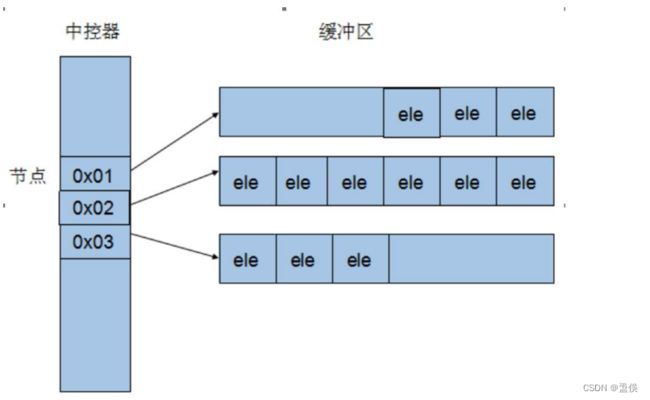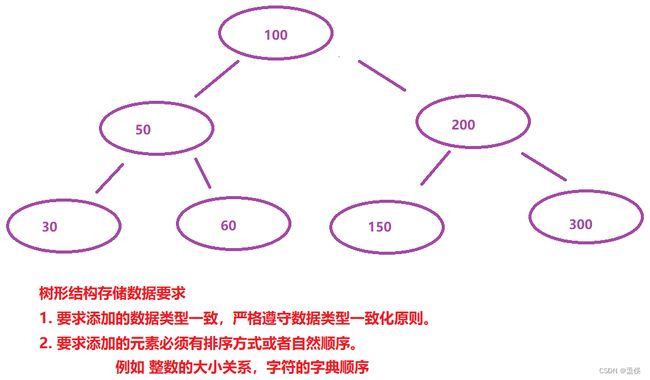17.STL 库(C++)plus
STL 库(C++)
文章目录
- STL 库(C++)
-
- 1.迭代器
-
- 1.1 概述和分类
- 1.2案例
- 2.C++ 的 string 类型
-
- 2.1string 概述
- 2.2 string 构造函数
- 2.3 string 赋值操作
- 2.4string存取字符串操作
- 2.5string拼接操作
- 2.6 string 查找和替换
- 2.7string 比较操作
- 2.8string 子串
- 2.9string 插入和删除操作
- 2.10 stirng 字符串转 c 语言字符串
- 3.vector
-
- 3.1概述
- 3.2 vector构造函数
- 3.3vector 赋值操作
- 3.4vector大小操作
- 3.5vector数据存取操作
- 3.6vector插入和删除操作
- 4.deque
-
- 4.1deque概述
- 4.2deque 构造函数
- 4.3deque 赋值操作
- 4.4deque大小操作
- 4.5deque双端插入和删除操作
- 4.6deque数据存取
- 4.7deque插入操作
- 4.8deque删除操作
- 5.stack
-
- 5.1stack构造函数
- 5.2stack赋值操作
- 5.3stack数据存取操作
- 5.4 stack大小操作
- 6.queue
-
- 6.1queue 构造函数
- 6.2queue 存取,插入和删除操作
- 6.3queue赋值操作
- 6.4 queue大小操作
- 7.list【常用】
-
- 7.1list构造函数
- 7.2list 数据元素插入和删除操作
- 7.3list大小操作
- 7.4list赋值操作
- 7.5 list数据的存取
- 7.6list反转
- 8.set/multiset
-
- 8.1概述
- 8.2set构造函数
- 8.3set赋值操作
- 8.4set大小操作
- 8.5set插入和删除操作
- 8.6set查找操作
- 9.pair对组
-
- 9.1概述
- 9.2 获取 pair 对组
- 10.map 键值对
-
- 10.1概述
- 10.2 map 构造函数
- 10.3map赋值操作
- 10.4 map 容量函数
- 10.5 map 插入数据元素操作
- 10.6map删除操作
- 10.7map查找操作
1.迭代器
1.1 概述和分类
迭代器:
迭代器是 STL 库中的一个特殊工具,不属于容器本身,但是迭代器的获取需要通过容器。迭代器会根据容器的数据情况进行必要的初始化和限制操作。
可移动的,指针,可以通过迭代器进行数据的获取,查询,截取,添加操作。
| 迭代器类型 | 描述 |
|---|---|
| 输入迭代器 (Input Iterator) | 用于读取数据序列的元素,只能使用前向迭代操作 |
| 输出迭代器 (Output Iterator) | 用于向数据序列写入元素,只能使用前向迭代操作 |
| 前向迭代器 (Forward Iterator) | 用于读写数据序列的元素,支持前向迭代操作 |
| 双向迭代器 (Bidirectional Iterator) | 用于读写数据序列的元素,支持前向和后向迭代操作 |
| 随机访问迭代器 (Random Access Iterator) | 用于读写数据序列的元素,支持随机访问操作和常数时间复杂度的元素访问 |
| 连续内存迭代器 (Contiguous Iterator) | 特殊形式的随机访问迭代器,用于在连续内存中移动 |
| 反向迭代器 (Reverse Iterator) | 反向封装其他迭代器,实现反向遍历操作 |
1.2案例
利用 STL 库中使用频类较高的 vertor 来演示迭代器
vector::iterator it = v1.begin();
iterator 是一个针对于当前 vector 容器的迭代器
是访问数据内容的一个【指针】,如果想要提取 vector 中
存储的数据内容,需要通过 *it 获取
#include 2.C++ 的 string 类型
2.1string 概述
原则:
- C/C++双引号包含的字符串内容,都是字符串常量
- C/C++ 字符串都是以 ’\0‘ 结尾
字符串是开发中重要的数据载体
2.2 string 构造函数
// 创建一个字符串
string(); // string *s1 = new string;
// 使用一个 string 对象初始化另一个 string 对象
string(const string& str); // string *s3 = new string(arr);
// 使用字符串 s 初始化
string(const char * s);// string str = "字符串";
// 使用 n 个字符 c 初始化 v
string(int n,char c);// string *s4 = new string(10,'a');
#include 2.3 string 赋值操作
// char * 类型字符串赋值给当前字符串
string& operator = (const char* s);// string str1 = "xiaoyu";
// 把字符串 s 赋给当前的字符串
string& operator = (const string &s); // string str1 = str2;
// 把字符赋值给当前的字符串
string& opeartor = (char c); // string str1 = 'A';
// 把字符串 s 赋给当前的字符串
string& assign(const char *s);// str1.assign(arr);
// 把字符串 s 的前 n 个字符赋给当前的字
string& assign(const char *s,int n);
//str1.assign(arr,3);
// 把字符串 s 赋给当前字符串
string& assign(const string &s);//str1.assign(str2);
// 用 n 个字符 c 赋给当前字符串
string& assign(int n, char c);// str1.saagin(10,'A');
// 将 s 从 start 开始 n 个字符赋值给字符串
string& assign(const string &s,int start,int n);// str1.assign(str6,3,3);
#include 2.4string存取字符串操作
// 通过[] 方式取字符
char& operator[](int n);// str[2]
// 通过 at 方式获取
char& at(int n);// str.at(2)
#include 2.5string拼接操作
// 重载 += 操作符
string& operator+=(const string& str);
//重载 += 操作符
string& operator+=(const char* str);
// 重载 += 操作符
string& operator+=(const char c);
// 把字符串 s 连接到当前字符串结尾
string& append(const char* s);
// 把字符串 s 的前 n 个字符连接到当前字符串结尾
string& append(const char*s,int n);
// 同 operator+=()
string& append(const string &s);
// 把字符串 s 中从 pos 开始的 n 个字符连接到当前结尾
string& append(const string &s,int pos,int n);
// 在当前字符串结尾添加 n 个字符 c
string& append(int n,char c);
#include 2.6 string 查找和替换
// 查找 str 第一次出现的位置
int find(const string& str,int pos = 0) const;
// 查找 s 第一次出现的位置,从 pos 开始查找
int find(const char* s,int pos = 0) const;
// 从 pos 位置查找 s 的前 n 个字符第一次位置
int find(const char* s,int pos,int n) const;
// 查找字符 c 第一次出现的位置
int find(const char c,int pos = 0) const;
// 查找 str 最后一次位置,从 pos 开始查找
int rfind(const string& str,int pos = npos) const;
// 查找 s 最后一次出现的位置,从 pos 开始查找
int rfind(const char*s,int pos = npos) const;
// 从 pos 查找 s 的前 n 个字符最后一次位置
int rfind(const char* s,int pos ,int n);
// 查找字符 C 最后一次出现位置
int rfind(const char c,int pos = 0);
// 替换从 pos 开始 n 个字符为字符串 str
string& replace(int pos,int n,const string& str);
// 替换从 pos 开始的 n 个字符为字符串 s
string& replace(int pos,int n,const char* s);
#include 2.7string 比较操作
/*
compare 函数在 > 时返回 1,< 时返回 -1,== 时返回 0。
比较区分大小写,比较时参考字典顺序,排越前面的越小,大写的 A 比小写的 a 小。
*/
// 与字符串 s 比较
int compare(const string &s) const;
// 与字符串 s 比较。
int compare(const char *s) const;
#include 2.8string 子串
// 返回由 pos 开始的 n 个字符组成的字符串
string substr(int pos = 0,int n = npos) const;
// 获取字符串有效字符个数
size_t length();
#include 2.9string 插入和删除操作
// 插入字符串
string& insert(int pos,const char* s);
// 插入字符串
string& insert(int pos,string &str);
// 在指定位置插入 n 个字符 c
string& insert(int pos,int n,cahr c);
//删除从 pos 开始的 n 个字符
string& erase(int pos,int n = npos);
#include 2.10 stirng 字符串转 c 语言字符串
// string 字符串转 c 语言字符串
const char * c_str();
// 例子:
const char* str2 = str.c_str();
cout << str2 << endl;
3.vector
3.1概述
vector 底层是一个数组形式,而且是一个动态可变容量的数组。
提供的参数函数设计到数组末尾添加和删除,以及中间元素的获取,插入,遍历操作。
【常用容器】
vector 配合的迭代器是【双向可读可写迭代器】
3.2 vector构造函数
// 采用模板实现类实现,默认构造函数
vector<T> v;
// 将 v[begin(),end())区间中的元素拷贝给本身
vector(v.begin(),v.end());
// 构造函数将 n 个 elem 拷贝给本身。
vector(n,elem);
// 拷贝构造函数
vector(const vector &vec);
#include 3.3vector 赋值操作
// 将[beg,end)区间中的数据拷贝赋值给本身
assign(v.begin(),v.end());
// 将 n 个elem 拷贝赋值给本身
assign(n,elem);
// 重载等号操作符
vector& operator = (const vector &vec);
// 将 vec 与本身的元素互换
swap(vec);
#include 3.4vector大小操作
// 返回容器中元素的个数
size();
// 判断容器是否为空
empty();
//重新指定容器的长度为 num ,若容器变长,则以默认值填充新位置,如果容器变短,则末尾超出容器长度的元素被删除
resize(int num);
// 重新指定容器的长度为 num ,若容器变长,则以默认值填充新位置,弱国容器变短,则末尾超出容器长度的元素被删除
resize(int num,elem);
// 容器的容量
capacity();
// 容器预留 len 个元素,预留位置不初始化,元素不可访问
reserve(int len);
#include 3.5vector数据存取操作
// 返回索引 idx 所指的数据,如果 idx 越界,抛出 out_of_range 异常
at(int idx);
// 返回索引 idx 所指的数据,越界时,运行直接报错
operator[];
// 返回容器中第一个数据元素
front();
// 返回容器中最后一个数据元素
back();
#include 3.6vector插入和删除操作
//迭代器指向位置 pos 插入 count 个元素 ele
insert(const_iterator pos,int count,ele);
// 尾部插入元素 ele
push_back(ele);
// 删除最后一个元素
pop_back();
// 删除迭代器从 start 到 end 之间的元素
erase(const_iterator start,const_iterator end);
// 删除迭代器指向的元素
erase(const_iterator pos);
// 删除容器中所有元素
clear();
#include 4.deque
4.1deque概述
- 整体结构可以认为是 链表 + 数组,每一个链表结点中都存储目标数据类型数组,内存空间非连续
- 访问效率低,因为内存空间非连续,需要进行指针跳转和结点之间数据结算操作,效率较低
- 空间利用率较低,同时内存的碎片化情况较为复杂。后续有可能会影响其他程序使用。
- deque 使用场景远不如 vector
4.2deque 构造函数
// 默认构造函数
deque<T>deqT; // deque d1;
// 构造函数将[beg,end)区间中的元素拷贝给本身。
deque(beg,end);
//dequed2=deque
// 构造函数将 n 个 elem 拷贝给本身
deque(n,elem);
// deque d3 = deque(10,"添加10个");
//拷贝构造函数
deque(const deque &deq);
// deque d4 = deque(d2);
#include 4.3deque 赋值操作
// 将[bed,end)区间中的数据拷贝赋值给本身。
assign(beg,end);
//d2.assign(d1.begin() + 2,d1.end() - 2);
// 将 n 个 elem 拷贝赋值给本身
assign(n,elem);
//d3.assign(10,"追加10个");
//重载等号操作符
deque &operator=(const deque &deq);
// d4 = d3;
//将 deq 与本身的元素互换
swap(deq);
//d5.swap(d6);
#include 4.4deque大小操作
// 返回容器中元素的个数
deque.size();
// 返回容器是否为空
deque.empty();
// 重新指定容器的长度为 num,若容器变长。则以默认值填充新位置。如果容器变短,则末尾超出容器长度的元素被删除。
deque.resize(num);v
// 重新指定容器的长度为 num,若容器变长,则以 elem 值填充新位置,如果容器变短,则末尾超出容器长度的元素被删除。
deque.resize(num,elem);
// 例子上边
4.5deque双端插入和删除操作
// 在容器尾部添加一个数据
push_back(elem);
// d1.push_back("安阳");
//在容器头部插入一个数据
push_front(elem);
// 删除容器最后一个数据
pop_back();
// 删除容器第一个数据
pop_front();
#include 4.6deque数据存取
// 返回索引 idx 所指的数据,如果 idx 越界,抛出 out_of_range;
at(idx);
// 返回索引 idx 所指的数据,如果 idx 越界,不抛出异常,直接出错。
operator[];
//返回第一个数据
front();
// 返回最后一个数据
back();
//例子见上
4.7deque插入操作
// 在 pos 位置插入一个 elem 元素的拷贝,返回新数据的位置
insert(pos,elem);
// d1.insert(d1.begin() + 5,"周口");
// 在 pos 位置插入 n 个 elem 数据,无返回值
insert(pos,n,elem);
// d1.insert(d1.begin(),2,"郑州");
//在 pos 位置插入[begin,end) 区间的数据,无返回值
insert(pos,beg,end);
//d1.insert(d1.begin() + 3,d2.begin(),d2.end());
#include 4.8deque删除操作
// 移除容器的所有数据
clear();
// 删除[begin,end)区间的数据,返回下一个数据的位置
erase(beg,end);
//删除 pos 位置的数据,返回下一个数据的位置
erase(pos);
//例子见上
5.stack
- stack 是一种先进后出(Fir In Last Out,FILO)数据结构
- 不具备迭代器
5.1stack构造函数
// 采用模板类实现,stack 对象的默认构造形式
stack<T> stkT;
// 拷贝构造函数
stack(const stack &stk);
5.2stack赋值操作
// 重载等号操作符
stack& operator = (const stack &stk);
5.3stack数据存取操作
// 向栈顶添加元素
push(elem);
//从栈顶以处第一个元素
pop();
//返回栈顶元素
top();
5.4 stack大小操作
//判断堆栈是否为空
empty();
// 返回堆栈的大小
size();
// stack 相关函数
#include stkT; // 采用模板类实现,stack 对象的默认构造函数
stack(const stack &stk);// 拷贝构造函数
stack& operator = (const stack & stk); // 重载等号操作符
push(elem);// 向栈顶添加元素
pop();// 从栈顶移除第一个元素
top();// 返回栈顶元素
empty(); // 判断堆栈是否为空
size();// 返回堆栈的大小
*/
int main(int argc, char const *argv[])
{
stack<string> st1;
st1.push("天梭");
st1.push("美度");
st1.push("浪琴");
st1.push("IWC");
st1.push("欧米伽");
st1.push("宝珀");
st1.push("劳力士");
st1.push("积家");
st1.push("百达翡丽");
stack<string> st2 = stack<string>(st1);
stack<string> st3 = st1;
while (st1.empty() != true)
{
cout << st1.top() << endl;
st1.pop();
}
cout << "st2.size() : " << st2.size() << endl;
return 0;
}
6.queue
- queue 是一种先进先出(First ln First Out,FIFO)的数据结构
- 不具备迭代器
6.1queue 构造函数
// queue 采用模板类实现,queue 对象的默认构造形式
queue<T> queT;
// 拷贝构造函数
queue(const queue $que);
6.2queue 存取,插入和删除操作
// 往队尾添加元素
push(elem);
// 从队头移除第一个元素
pop();
// 返回最后一个元素
back();
// 返回第一个元素
front();
6.3queue赋值操作
// 重载等号操作符
queue& operator=(const queue &que);
6.4 queue大小操作
// 判断队列是否为空
empty();
// 返回队列的大小
size();
#include queT;// queue采用
*/
int main(int argc, char const *argv[])
{
queue<string> q1;
q1.push("可乐");
q1.push("崂山白花蛇草水");
q1.push("格瓦斯");
q1.push("红色尖叫");
q1.push("白桃味芬达");
q1.push("樱桃味可乐");
cout << "q1.front() : " << q1.front() << endl;
cout << "q1.back() : " << q1.back() << endl;
q1.pop();
cout << "q1.front() : " << q1.front() << endl;
cout << "q1.size(): " << q1.size() << endl;
while (q1.empty() != true)
{
cout << q1.front() << endl;
q1.pop();
}
return 0;
}
7.list【常用】
- 底层结构是双向有头链表
- 和 vector 都是常用【容器】
- 支持迭代器
7.1list构造函数
// list 采用模板类实现,对象的默认构造形式
list<T> lstT;
// 构造函数将[beg,end)区间中的元素拷贝给本身。
list(beg,end);
// 构造函数将 n 个 elem 拷贝给本身
list(n,elem);
// 拷贝构造函数
list(const list &lst);
7.2list 数据元素插入和删除操作
// 在容器尾部加入一个元素
push_back(elem);
// 删除容器中最后一个元素
pop_back();
// 在容器开头插入一个元素
push_front(elem);
//在容器开头移除第一个元素
pop_front();
#include
#include // 在 pos 位置插入 elem 元素的拷贝,返回新数据位置
insert(pos,elem);
// 在 pos 位置插入 n 个 elem 数据,无返回值。
insert(pos,n,elem);
// 在 pos 位置插入[beg,end)区间的数据,无返回值
insert(pos,beg,end);
// 移除容器的所有数据
clear();
// 删除[beg,end)区间的数据,返回下一个数据的位置
erase(beg,end);
//删除 pos位置的数据,返回下一个数据的位置
erase(pos);
//删除容器中所有与 elem 值匹配的元素
remove(elem);
#include
#include 7.3list大小操作
//返回容器元素的个数
size();
// 判断容器为空
empty();
//重新制定容器的长度为 num ,若容器变长,则以默认值填充新位置。如果容器变短,则末尾超出容器长度的元素被删除
resize(num);
//重新指定容器的长度为 num,若容器变长,则以 elem 值填充新位置,如果容器变短,则末尾超出容器长度的元素被删除。
resize(num.elem);
7.4list赋值操作
// 将[beg,end)区间中的数据拷贝赋值给本身
assign(beg,end);
//将 n 个 elem 拷贝赋值给本身
assign(n,elem);
// 重载等号操作符
list& operator = (const list &lst);
//将 lst 与本身的元素互换
swap(lst);
7.5 list数据的存取
// 返回第一个元素
front();
//返回最后一个元素
back();
#include
#include 7.6list反转
// 反转链表,比如 lst 包含 1,3,5 元素,运行此方法后,lst 就包含 5,3,1元素
reverse();
// list排序
sort();
#include
using namespace std;
int main(int argc, char const *argv[])
{
list<int> list1;
list1.push_back(1);
list1.push_back(3);
list1.push_back(5);
list1.push_back(7);
list1.push_back(9);
list1.push_back(2);
list1.push_back(4);
list1.push_back(6);
list1.push_back(8);
list1.push_back(10);
/*
sort 有两个函数
sort(); [目前使用,默认升序]
sort(提供排序规则函数对象);
*/
list1.sort();
for (list<int>::iterator it = list1.begin(); it != list1.end(); it++)
{
cout << "list1 : " << *it << endl;
}
cout << "-----------------------" << endl;
list1.reverse();
for (list<int>::iterator it = list1.begin(); it != list1.end(); it++)
{
cout << "list1 : " << *it << endl;
}
cout << "-----------------------" << endl;
return 0;
}
8.set/multiset
8.1概述
set/multiset 底层结构可以认为是平衡二叉树
- 添加元素有自然顺序或者对应的比较方式
- 添加元素类型一致
- 数据会自动排序
- 数据不允许重复存储
8.2set构造函数
// 默认构造函数
set<T> st;
//multiset 默认构造函数
mulitset<T> mst;
//拷贝构造函数
set(const set &st);
#include 8.3set赋值操作
// 重载等号操作符
set&operator=(const set &st);
//交换两个集合容器
swap(st);
8.4set大小操作
// 返回容器中元素的数目
size();
// 判断容器是否为空
empty();
8.5set插入和删除操作
// 在容器中插入元素
insert(elem);
// 清楚所有元素
clear();
//删除从 pos 迭代器所指的元素,返回下一个元素的迭代器
erase(pos);
// 删除区间[beg,end)的所有元素,返回下一个元素的迭代器
erase(beg,end);
//删除容器中值为 elem 的元素
erase(elem);
#include 8.6set查找操作
// 查找键 key 是否存在,若存在,返回改键的元素的迭代器,若不存在,返回 set.end()
find(key);
// 查找键 key 的元素的个数
cout(key);
// 返回第一个 key>=keyElem 元素的迭代器
lower_bound(keyElem);
// 返回第一个 key>keyElem 元素的迭代器
upper_bound(keyElem);
// 返回容器中key与 keyElem 相等的上下限的两个迭代器(上边两个的整合)
equal_range(keyElem);
#include 9.pair对组
9.1概述
对组(pari)将一对值组合成一个值,这一对值可以有不同的数据类型,两个值可以分别用 pair 的两个共有属性 first 和 second 访问 。
类模板:
template<typename T1,typename T2> struct pair { T1 first; T2 second; }
9.2 获取 pair 对组
pair<T1,T2>(T1 t1,T2,t2);
make_pair(T1 t1,T2 t2);
10.map 键值对
10.1概述
- map 结构底层存储内容都是pair 对组
- map 将 pair 第一个数据认为是【键值】,第二个数据认为是【实值】,存储的内容是【键值对内容】
- map 中 pair 第一个元素,或者说【键值】不可以重复,并且排序规则按照【键值】完成
10.2 map 构造函数
// map 默认构造函数
map<T1,T2> mapTT;
// 拷贝构造函数
map(const map &mp);
10.3map赋值操作
// 重载等号操作符
map& operator=(const map &mp);
// 交换两个集合容器
swap(mp);
10.4 map 容量函数
// 返回容器中元素的数目
size();
// 判断容器是否为空
empty();
10.5 map 插入数据元素操作
map.insert(...);
// 往容器插入元素,返回pair10.6map删除操作
// 删除所有元素
cleae();
// 删除 pos 迭代器所指的元素,返回下一个元素迭代器
erase(pos);
// 删除区间[beg,end)的所有元素,返回下一个元素的迭代器
erase(beg,end);
// 删除容器中 key 为 keyElem 的对组
erase(keyElem);
10.7map查找操作
// 查找键 key 是否存在,若存在,返回该键的元素的迭代器,若不存在,返回 map.end()
find(key);
// 返回容器中 key 为 keyElem 的对组个数,对 map 来说,要么是 0 ,要么事 1 对 multimap 来说,值可能大于1.
count(keyElem);
//返回第一个 key>=keyElem 元素的迭代器
lower_bound(keyElem);
// 返回第一个 key>keyElem 元素的迭代器
upper_bound(keyElem);
//返回容器中 ke 与 keyElem 相等的上下限的两个迭代器
//上两个的结合
equal_range(keyElem);






